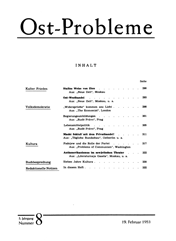
on government reshuffles in Czechoslovakia and Romania
More...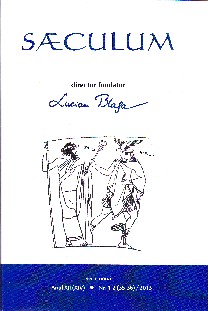
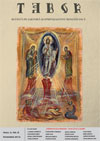
Keywords: evocation; baptism; happiness; monasticism; literature; writer
Essential writer and theologian, N. Steinhardt is one of the most interesting Romanian intellectual fi gures after the Second World War. Being politically detained by the socialistic dictatorial regime and Jewish by birth, he receives his baptism in prison, thus fi nding in Orthodoxy the true spiritual support to overcome the hardships of his mundane penance. After his sentence, he becomes a monk in Rohia monastery, in Transylvania, where he lives until his death, writing and publishing many literature and theology books. He has contact with many people of culture and artists – writers, philosophy professors, church fi gures – thus living in a context of moral purity and elevation. Their testimonies about him have been gathered in a volume of real documentary and evocative value, presented by this text, which, using the characterizations of those who knew him or who were close to him, draws a nice portrait in the context of that erA
More...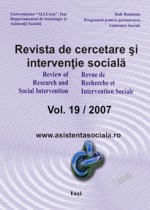
Keywords: Auguste Comte; sociology; commemoration; French sociology;
This article present the eveniment for anniversary of 150 yaers from the Auguste Comte dead. The author presents the contribution of Auguste Comte to the development of sociology and his influences for social science.
More...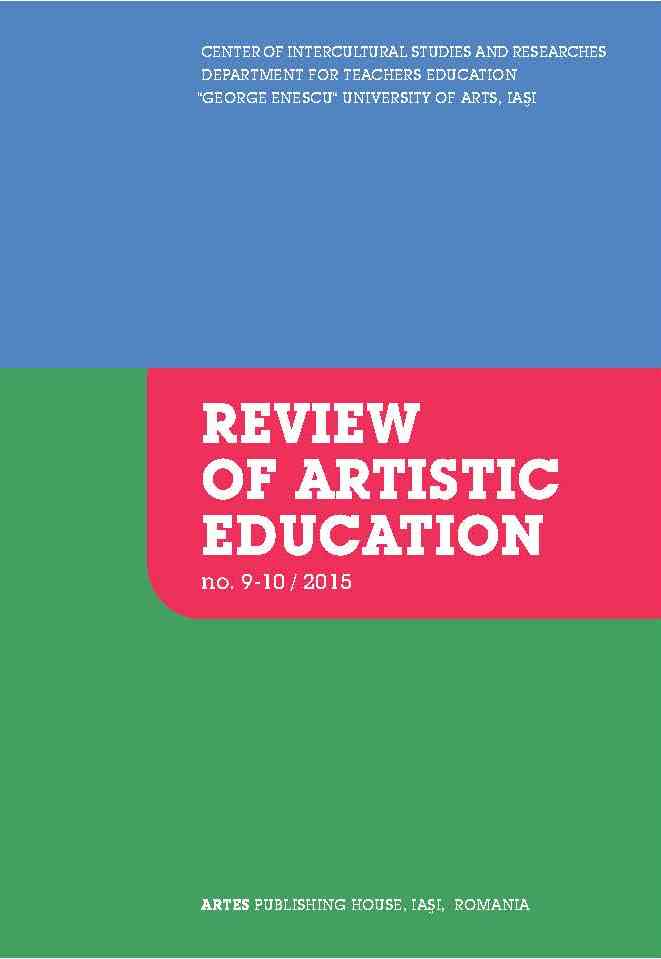
Keywords: educational policies; support; talent; giftedness
The topic of supporting the children and young talented through educational policy and strategies is increasingly interesting for the researchers in the psychopedagogy of excellence. Lack of support leads to a double problem: on the one hand can result in loss of talent, on the other hand a waste of human resources extremely useful to society. The purpose of this paper is to briefly present the state of concerning for this topic in Romania. Thus, we conducted a brief overview of the conceptual meaning that it has educational policies and educational strategies among local researchers and we analyzed the main legislative documents relevant for giftedness support in our country. Our approach has led us to identify some positive aspects and deficiencies of supporting talent and giftedness through national educational policies.
More...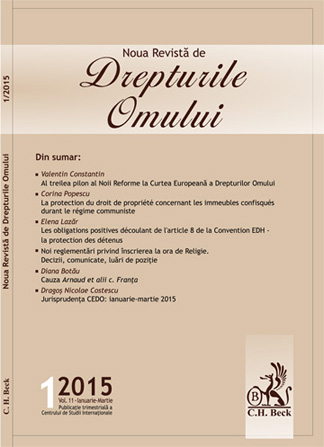
Keywords: consultative approval; interpretation of the Convention; Protocol 16; European Convention on Human Rights
Protocol 16 to the European Convention on Human Rights ends the new reform at the Court. It is an optional protocol that will come into force once it is ratified by 10 states party to the Convention. Through the consultative approval created by the Protocol states are granted access to the Court. The highest courts, chosen by the states, will have locus standi in the approval procedure. This last pillar of the reform changes the logic of the system of protection. It is unclear whether the consultative character of the approval is compatible with the authority of the Court in matters related to the interpretation of the Convention. Also noticeable is the contradiction between the original purpose of the system, i.e. to encourage the access of individuals to the international courts, and the current purpose, i.e. of facilitating the access of national courts to the Court. The costs of the reform have been transferred nontransparently and somewhat undemocratically to the beneficiaries of the rights instead of being absorbed by the system of protection. This marks the end of an era in the history of the Court.
More...Keywords: Contemporary History Section; Museum; reorganization
Reorganization of the museum as a whole, both the departments and all the others. Not only a department, but the entire museum must be reorganized, how to organize museums in Europe and the world. The second conclusion refers to the need to unite the efforts of all those who in one way or another, and in the first place museographers, only they are involved in finding solutions concerns the new organization of museums
More...Keywords: comunități științifice;activități științifice și tehnice;analiză;NTIC Science Community;scientific and technological activities;analysis;NT&C
Comunitatea ştiinţifică este un grup social format din indivizi a căror profesie este cercetarea ştiinţifică şi tehnică. Din perspectiva comunităţilor ştiinţifice analiza activităţilor ştiinţifice şi tehnice reprezintă analiza proceselor de construcţie, comunicare şi utilizare a informaţiei şi implicit a produselor şi sistemelor care permit construcţia, comunicarea, stocarea şi utilizarea sa. Analiza acestor procese se realizează din perspectiva utilizării Noilor Tehnologii ale Informării şi Comunicării (NTIC). Science comunity is a social group made up of individuals having scientific and technology research as their field of activity. The analysis of scientific and technology activities viewed through scientific comunity point of view presents the making process, dissemination and use of information and implicitly the sistems and products that allow building, communication and dissemination and the use of information. The analysis of those processes bassed upon the use of the new technologies of Information and Communications (IT&C).
More...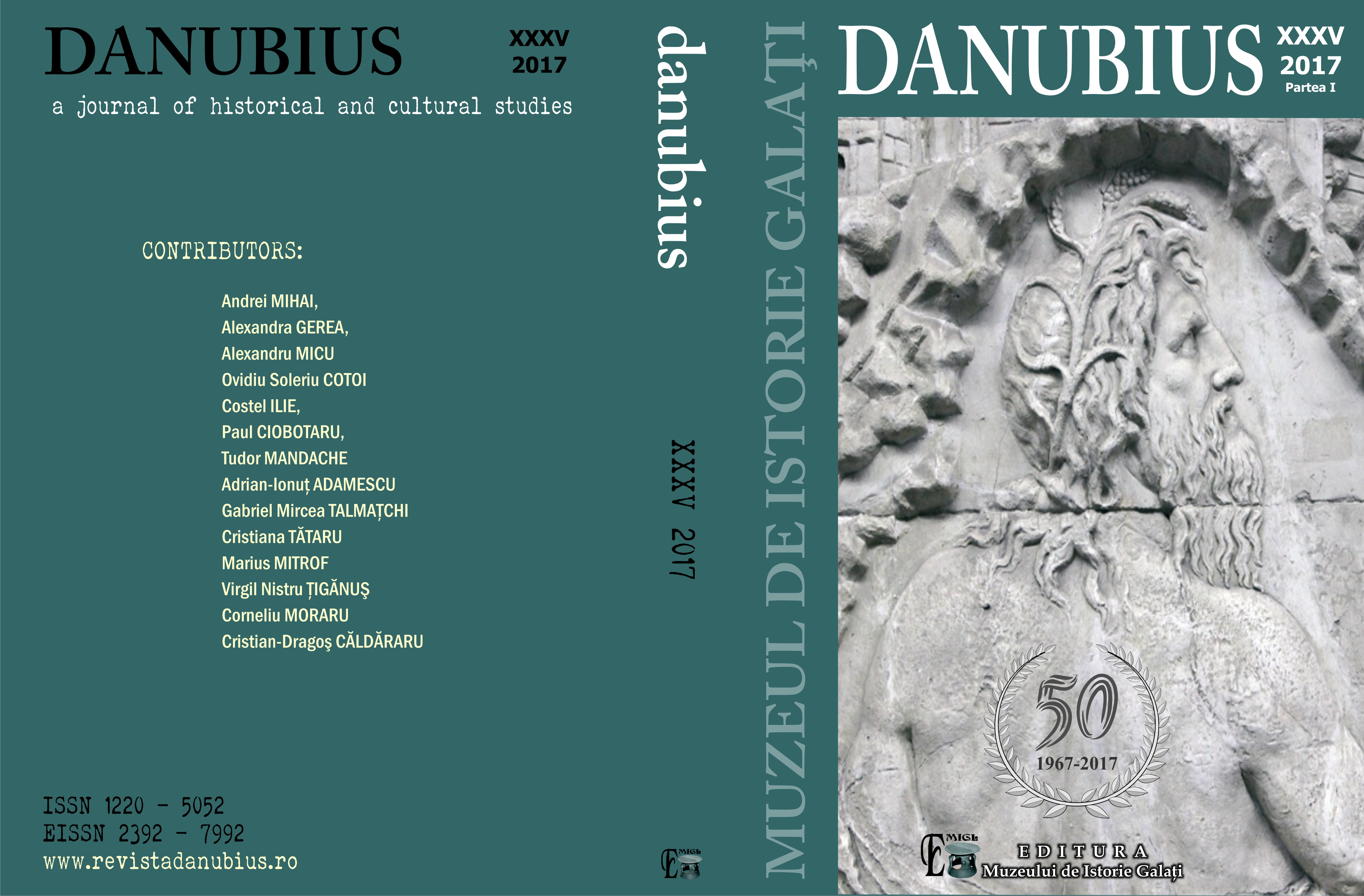
Keywords: I.T.Dragomir; Bărboşi; archaeology; Dolichen
At the beginning of 2007, I.T. Dragomir, curator, archaeologist, scientific researcher and director of the History Museum of Galaţi, donated to this institution, where he became an authority in the field of Archaeology, his private correspondence, archaeological notes, plans and reports, and a shelf full of scientific journals and books, which were a part of his personal library.Through the publication, for the first time, of this part of his correspondence (130 letters and notes), we aim at depicting the scientific personality of the historian I.T. Dragomir, during some important years of his life, when he became a well known scientific researcher and archaeologist.
More...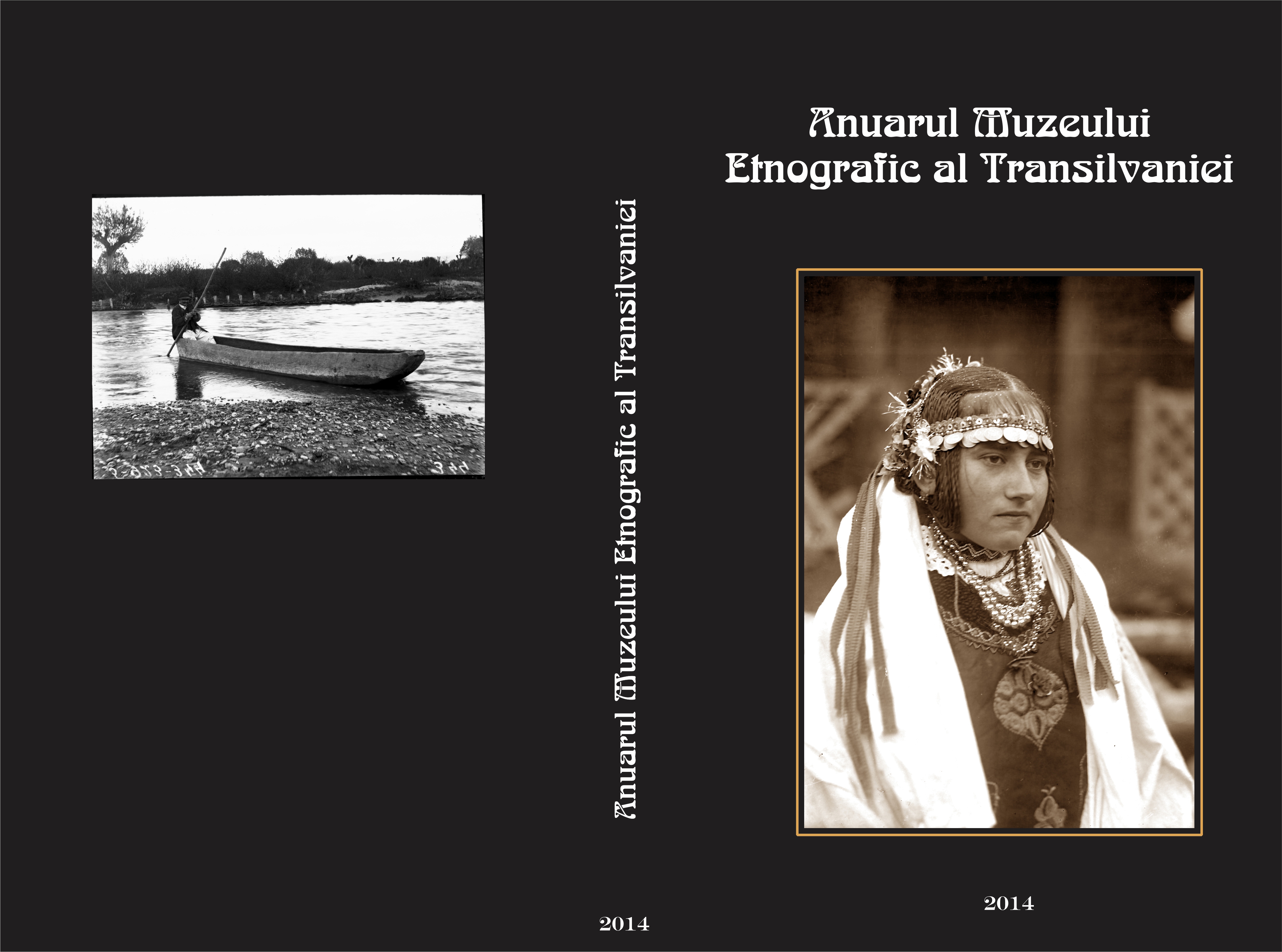
Keywords: history; identity; specific representation; awareness; promotion;
Aries Seat, the seventh Szeckler chair, topographically isolated fromthe rest of the Szeckler Seats, forms a historical region, a small-scaleethnographic area, which was originally composed of 29 localities, and later wascomposed of only 22 localities. The Seat, as an administrative unit, with its 22localities, operated until 1876, when it was finally dissolved and merged withpart of the shire of Turda, thus constituting the Turda-Aries Shire. Currently (asof new administrative-territorial division of the Country in counties in 1937,1950, 1968), Aries Seat localities are part of Alba county and Cluj county.The interest in the Aries Seat and the discovery of this ethnographicarea appeared in the second half of the 19th century, and was largely due to theethnographers Jankó János and Balázs Orbán. During the 19th and 20thcenturies, a large number of articles and studies appeared in various specializedpublications and in periodicals which treated various specific aspects of thisarea. The area is also represented in fiction literature by the work of severalwell-known Hungarian authors.Attempts to attract and maintain attention to the values of the region,the research in the area and then synthesizing the research results in collectionsand monographs have been made several times over the past two centuries.The various research campaigns, the large number of publications,indicate us that the interest in this area has not diminished with time. On thecontrary, we can say that the interest in this area was maintained over time andis still alive.
More...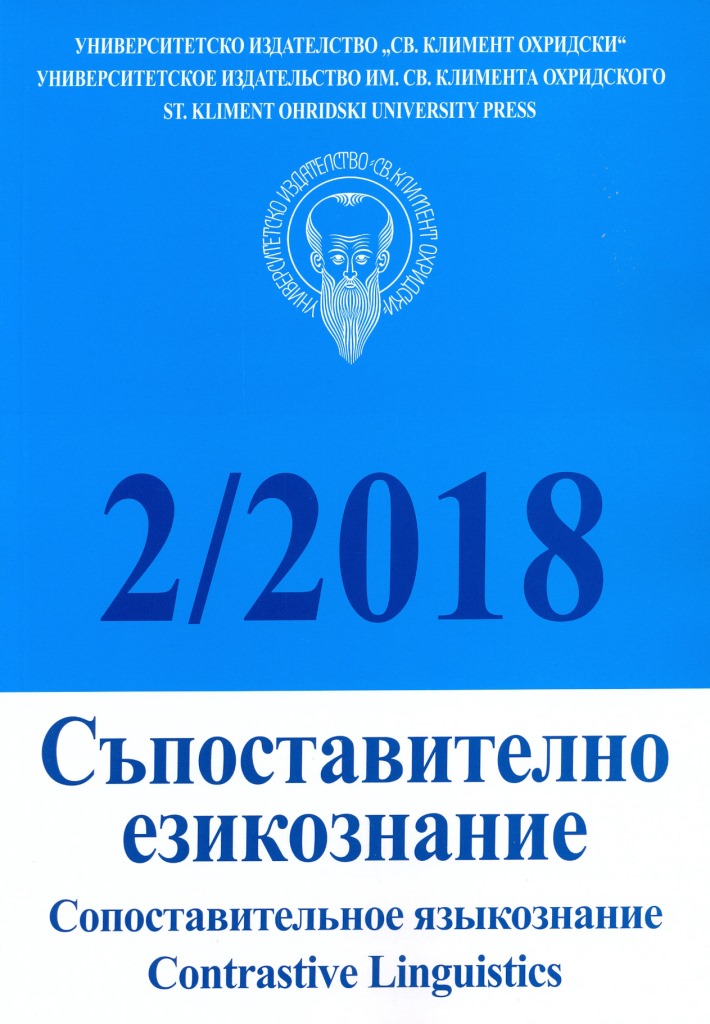
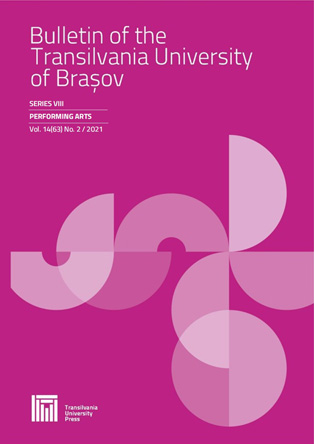
Keywords: Romantic bassoon; style, repertoire;
This research article aims at bringing to the attention of the public and young performers a repertoire less played in our country and aims in addition to broadening and deepening a lesser-known musical material and the analysis of new musical forms and genres, the issue being so related to instrumental technique, as well as understanding the elements of a specific language. The deepening of these composers and their compositional style helps to diversify the romantic repertoire and to expand the knowledge of the lesser-known schools. The peculiarity of these composers consists in the fact that they composed representative works, especially for wind instruments.
More...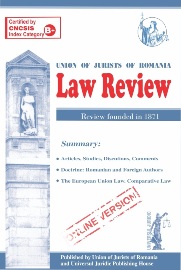
Keywords: semi-direct government; referendum; legislative initiative; popular vote; sovereignty;
The only authority of constitutional jurisdiction in Romania, independent of any other public authority, the Constitutional Court was designed with the aim of guaranteeing the supremacy of the Constitution. By analyzing art. 146 from the Romanian Constitution and also Chapter III of Law no.47/1992 regarding the organization and functioning of the Constitutional Court, which establishes the responsibilities of the Constitutional Court, it can be noticed that this public institution, independent, fulfills a complex role, exercising its role also in order to semi-direct forms of governance: the referendum, legislative initiative and, if national law allows (which is not the case of Romania), the popular vote. Exercising its powers in this respect, we can see the Court's essential role in ensuring the sovereign people the opportunity to intervene and mitigate the representative democracy asperities of parliament type, but will need to keep people close to the legislator.
More...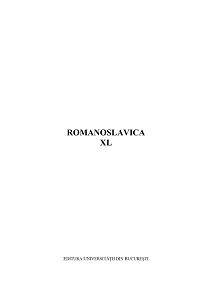
Keywords: Professor Nicolae Roşianu; 70 Years Old; Philology;
Scientific life: PROFESORUL NICOLAE ROŞIANU LA 70 DE ANI
More...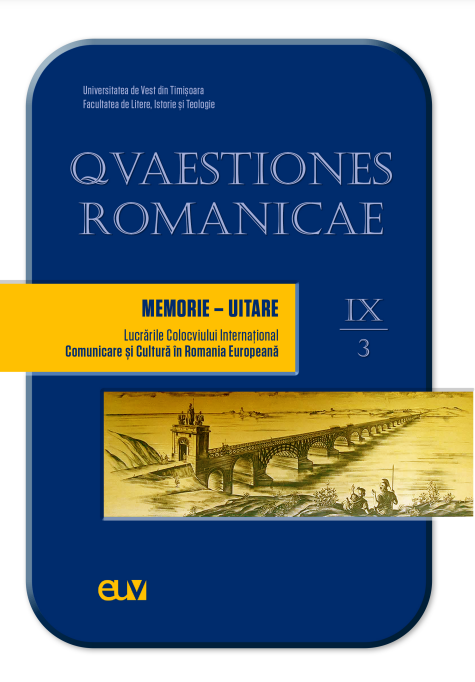
Keywords: Communist Party; Single Workers Front; National Democratic Bloc; National Democratic Front; coalition; purge; Banat;
In Banat, during this period, there is a growing sympathy of the population towards P.S.D. in the urban environment and, respectively, of the P.N.Ţ, in the rural environment. The National-Liberal Party had been in the background since 1938. Founder of the Single Workers' Front, on May 1, 1944, the Banat regional organization of the Communist Party would constantly try, after returning to legality (August 23, 1944), to minimize the influence of the Social Democrats on the unions in the area, to gain supremacy within the FUM and to eliminate people who did not share the communist ideology of business management, administration and the army. In all the counties of Banat (Caraș, Severin and Timiș-Torontal), in the last months of 1944, the Communist Party was particularly concerned with expanding its mass base by attracting certain categories of workers and peasants to its side. The Communists also closely monitored their mass organizations (Plowmen's Front, Patriotic Defense, Patriots Union, Madosz, Jewish Democratic Committee, etc.), organized large demonstrations under the auspices of the Single Workers' Front, in favor of the installation. a government of the National Democratic Front, a new coalition, in which they played, this time, a preponderant role (they were also part of the National Democratic Bloc, formed on June 20, 1944, along with the National Peasant Party, the National Liberal Party and the Social Party -Democrat) and were concerned with administrative "purification", considered an indispensable step in taking control of important institutions. However, the popularity of the communists was still quite low in the first months after the August 23, 1944 coup. With the support of Moscow and Soviet leader Stalin, the Communists will begin the assault on power, completed on March 6, 1945, by imposing the first pro-communist cabinet in Romanian history, led by Dr. Petru Groza, president of the Plowmen's Front.
More...Keywords: nZEB-nearly Zero Energy Buildings; Energy Atlas; Heat Island Mitigation; energy efficiency; renewable energy sources; urban retrofitting; integrated solutions;
Considering the climate change, the medium and long-term energy objectives of the European Union, regarding climate neutrality require significant reductions in energy consumption and implicitly in CO2 emissions related to the exploitation of buildings, and at the same time the promotion of energy production technologies from renewable source; the building envelope can become the support for the placement of these technologies both in the case of new constructions and in major energy renovation projects. The tools used for the purpose of sustainable urban planning with the objective of promoting new buildings with nearly-zero energy consumption but also with reference to the energetic reconfiguration of the existing built stock, such as the nZEB Urban Energy Atlas (Izabella Marin Lazăr 2022) include the possibility simulation in accordance with the proposed intervention scenarios and specific climatic conditions of the amount of energy from renewable sources that can be produced on site and the contribution of these sources to the energy balance of the urban area.
More...